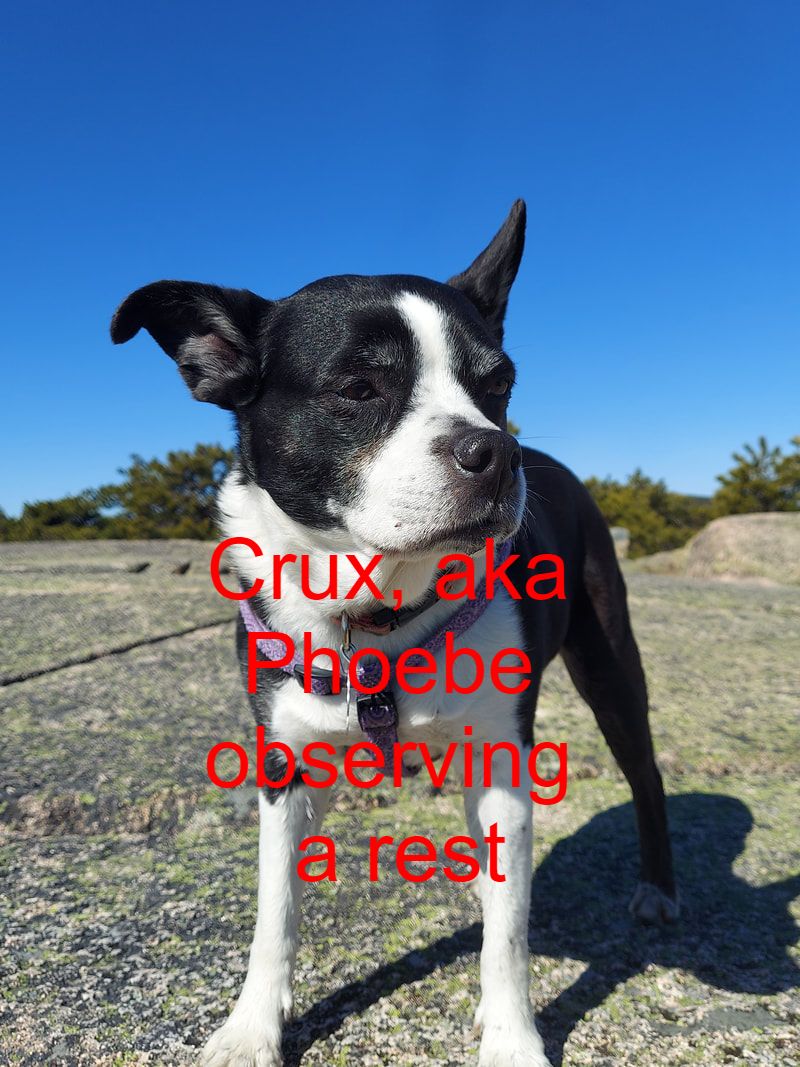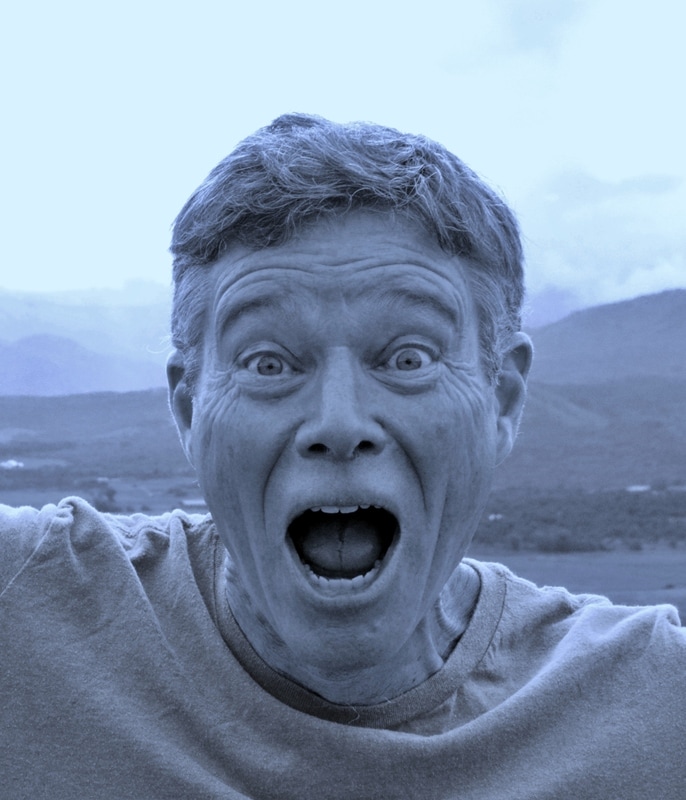A conversation with Dr. Moe Chen of the Institute of Musical Motion.* This conversation has been condensed and edited because Moe Chen is rather long-winded with a tendency towards tangential (at best) digressions.
Richard Shute (RS): Dr. Chen (Oh, call you Moe? sure, absolutely!) Moe, your area of speciality is metaphorical interpretations of movement in music, can you expand on that a bit for us?
Dr. Moe Chen (DMC): Well, gotta stop you right there, I study motion in music, not movement. Movement is random, unordered, fractal, chaotic. Motion implies a more controlled, though possibly still chaotic, progression. Also, did you know LBJ had a saying "never elaborate"? I subscribe to that school of thought. Ideas, concepts, metaphors, they should speak for themselves!
RS: Well hopefully you will express yourself in this conversation in ways that speak for themselves?
DMC: Let us hope! So before I dissect some of the songs on the program, chew on this rawhide of an idea: "change means movement, and movement means friction". Saul Alinsky maybe said that first, who knows right? Maybe MLK, maybe someone else. Anyway. I would have said Motion not Movement. But, whatever. Anyway this totally applies to music. Music, all music, even music by say Philip Glass or John Cage, is built on change which is built on movement and ergo friction! Dissonance? That crazy rubbing together of notes to make fire: blame friction which allows musical movement.
RS: Okay then! We are off an running...somewhere! Ok, yeah, so the Bagaduce Chorale program, you choose which pieces?
DMC: I picked those where the motion is interesting, less predictable, non-traditional, even surprising at times. Lots of western music, particularly the "classics", whatever that means, are totally predictable. Let's focus on the compositions that pull both the singer and listener into a state of motion that is dynamic, flexible and counters our expectations.
RS: Where do we begin? And where do metaphors come in here?
DMC: I focus on body-in-motion-metaphors, usually this translates to sports-like metaphors, something that most people can easily conceptualize. Let's start with "Alleluia" by Haggenberg. I hear this and I think: figure skating programs, right? This piece has two tempos, the 7/8 fast footwork, trippy sections of "alleluias" and the flowing legato sort of 4/4 section. The 7/8 segments are like the intricate, punctuated, precise, and high speed required footwork section, the 4/4 section is long looping phrases highlighted by leaps and jumps on the long notes. By the way, friction is hard on skates on ice, so you have to work hard to keep the forward motion going, just like you have to do in "Alleluia" to make sure it doesn't start to drag like a not-fit-enough skater at the 4 minute mark in the long program!
RS: So next up is "How Can I Keep from Singing", the new improved version by the Podd brothers.
DMC: Yes, totally rocks this one. The Old is New Again and all that jazz! And this one is walking vs. skipping! When I was a kid we used to walk home from school and play sidewalk games, one was race to the next telephone pole, another was crack jumping, and my personal fav skip-running. This verion of "How Can I" is totally skip-running 'cause they play with the timing and take the straight time Shaker thing and give it shake (don't you love bad puns!). So where in the original you would be walking along beat, beat, beat, beat, here you are hopping/skipping while the accompaniment is sort of cantering/galloping underneath the vocals for this cool counterpoint or hiccup cadence! Totally infectious!
RS: Absolutely! Impossible not to move to the music on this one! (Here DMC went on at great length about the piece by Randall Thompson, the Alf Houkum work, and Barnum's "Afternoon on a Hill" (somehow relating them to the sutained, steady energy created in an nuclear reactor, long-distance swimming and the glories of mountain climbing, but we have edited this out due to time constraints (and the fact that we had trouble following most of DMC's metaphors, particluarly related to friction in sub-atomic chain reactions!)).Yes, well we are running out of time, how about one more, how about the Lauridsen piece?
DMC: "Sure on This Shining Night." So the motion of that one phrase pretty much tells the story. I would like you to think of track and field events, specifically, the long jump, or even better, the pole vault! That opening phrase, a 3/4 and a 4/4 measure, built from 12 eighth notes and 1 quarter note (with that beautiful little rest at the beginning!). It is just like what a pole vaulter does. They rock back slightly (the rest) they pound down the runway (12 eighth note steps (with the strong leg step being the first step of each of the douples)) and then they spring into the air, using the speed/energy of the eighth notes to hang suspended on the word "night" for a millisecond before plunging back to earth and the next phrase. What is critical here is the friction that powers the motion up the runway to the moment of gravitational suspension that quickly turns around (falls) into the next phrase. This piece is fiendish, the tendency is to relish and slow the leading notes of the phrase, but if you do, there is not enough motion to create the suspension on the last note of the phrase--what would translate into hitting the bar rather than soaring over it!
Really, when you think about it, this is the fundamental energy of choral music, of music period! You need to use the friction of each note to push into the next, every time you slow down or linger too lovingly on a note, you lose energy, which requires more force/friction to push on in the phrase.
RS: Funny, I always thought the best music was sort of "frictionless".
DMC: Well, it actually is, the more internal energy, forward aiming motion the music has, the less energy it takes to move it forward, therefore less friction occurs between the object (the note) and the motion of the music. Singing should appear effortless, an artful balance between friction and sustained forward motion.
RS: Artful balance, one can't help but wonder if any of the composers you mentioned had similar thoughts to those you have expressed when they were creating these works?
DMC: Well, a composer hears the notes first in their head right? And, one could say, there is no friction in the mind, and yet, I suspect there is in fact friction related to imagined motion in the mind! The composer intuitively understands the laws of physics, just as we all do, and the notes they hear in their mind have to overcome inertia and friction and everything else. The only difference? In your mind it is easier to overcome these forces then when you sing those same notes out loud in the here and now!
RS: Well, I can't wait to put these music motion ideas into practice, I haven't run-skipped in a long time! Thank you so much for talking with us today! Our guest has been Dr. Moe Chen, author of "Music Can Move Mountains!: Using the Energy in Music to Sustainably Power Our Future."
*Dr. Moe Chen founded the IMM in Bumblebee, CA. He has a PhD in the Motion of Music and is a world-renowned consultant to professional musicians who turn to him whenever the motion in their music (their mojo) loses forward energy.


 RSS Feed
RSS Feed